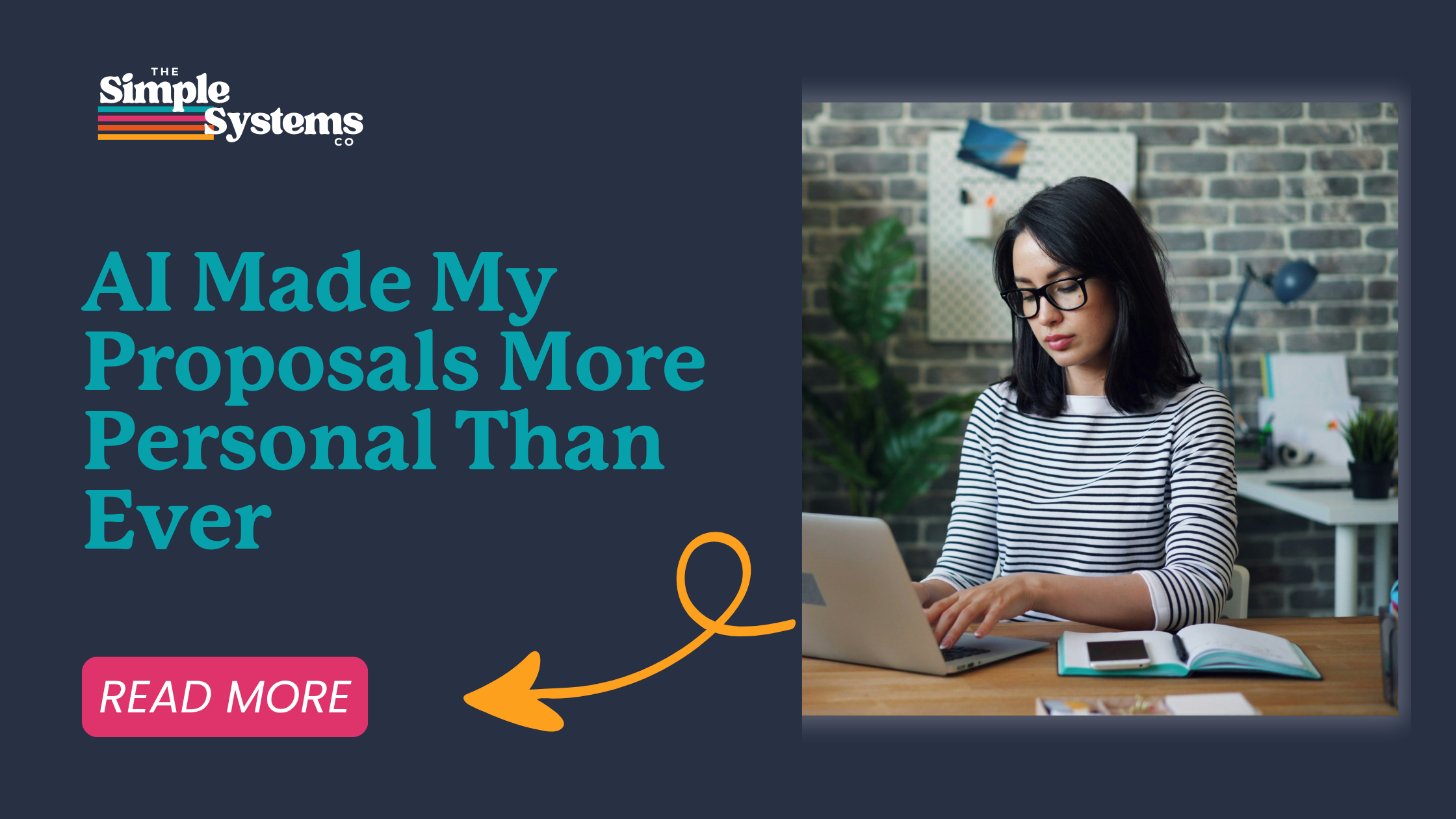
AI Made My Proposals More Personal Than Ever
I used to be a stenographer in my own client meetings.
Picture this: I'm on a Zoom call with a potential client, frantically scribbling notes while trying to listen, process, and respond intelligently. My brain was split between capturing what they said and actually thinking about what they needed.
The result? Generic proposals that took hours to write and barely scratched the surface of what clients actually wanted.
Everything changed when I discovered how to use AI tools like Fathom and ChatGPT to handle the grunt work. Now I save three hours per proposal and deliver something far more personal than anything I created manually.
The Mental Shift That Changes Everything
When I stopped worrying about taking notes, something unexpected happened to my brain.
I could give my clients complete focus. But more than that, I could actually *think* during our conversations.
Before, I was just trying to process what they were saying and capture key points. My mental bandwidth was maxed out on documentation.
Now my brain can look at their challenges and creatively come up with solutions in real time. I can hear objections they might have, answer questions more thoughtfully, and think about what's going to work best for them specifically.
I went from being reactive to proactive in my own meetings.
The AI Training Process Nobody Talks About
Here's where most people get AI completely wrong.
They think you just dump your website copy into ChatGPT and expect magic. That's like hiring someone and never training them.
I've spent months having actual conversations with ChatGPT. I talk to it all the time about my business, my values, my voice, my unique approach.
When it gets something wrong, I correct it. When it uses language I don't like, I teach it better alternatives.
The other day it suggested using the word "hate" in an offer. I don't use strong negative language like that, so I went back and said, "I prefer not to use the word hate. Can you come up with an alternative?"
It's a conversation and a learning process. I'm teaching it my boundaries, my values, and my communication style.
Why AI Proposals Are Actually More Personal
This flips conventional wisdom completely upside down.
My AI-assisted proposals are more personal than anything I used to write manually.
Think about it: The content comes from the actual transcript of my conversation with the client. It's my words and their words, addressing exactly what they asked for.
Compare that to my old method: I'd use the same standard proposal template, change the name, and send it out. Cookie-cutter personalisation at best.
Now every proposal is built from the specific language and concerns that came up in our actual conversation. The AI knows my voice and style, but it's working with completely unique raw material every time.
The Three-Hour Transformation
Here's what the process looks like now:
I use Fathom to record and transcribe client calls. No more frantic note-taking during conversations.
After the call, I take that transcript and feed it to my custom-trained ChatGPT with a clear proposal template.
The AI creates a first draft that captures both my voice and the client's specific needs.
I review, edit, and refine before sending. Nothing goes out without my final approval.
Total time saved per proposal: three hours.
But the time savings aren't even the best part. When I'm fully present in client conversations, they get the creativity of my brain instead of watching me frantically take notes. They get a better version of me.
I spend those reclaimed hours connecting with my family, getting out into nature, doing the things I love.
The Client Reaction That Surprised Me
I was nervous the first time I mentioned using AI to help write proposals.
The client's reaction? They wanted to know how to do it themselves.
Instead of being concerned about authenticity, they saw it as smart business. They recognised that I was using technology to deliver better service, not cut corners.
Getting Started Tomorrow
If you're drowning in proposal writing right now, here's your first step.
Before you touch Fathom or ChatGPT, get clear on two things:
First, make sure you have a ChatGPT that understands your voice and brand. Don't just dump information into it. Have conversations. Teach it how you communicate.
Second, create a clear proposal template. Your AI needs to understand exactly what you're trying to produce.
Foundation first, automation second.
The Authenticity Question
Some people worry that using AI makes them less authentic with clients.
Here's my take: Try it.
I never send anything out without reading it, checking it, and editing it myself. The final proposal is still authentically mine because I'm the one who trained the AI, guided the process, and approved the output.
I'm not a passive user. I'm the editor and curator of my own content.
AI handles the grunt work so I can be more human in my business relationships. It amplifies my capabilities without replacing my judgment.
The result? Better client connections, more personalised proposals, and three extra hours per week to spend on what matters most.
That's not less authentic. That's more strategic.
